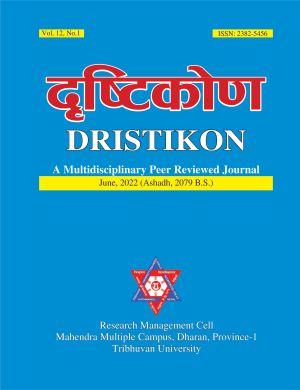Performance Art of the Rituals in Ethnic Film Numafung
DOI:
https://doi.org/10.3126/dristikon.v12i1.46122Keywords:
performance, rituals, restored behaviors, marriage, cultural tradition, bride price, double compensationAbstract
This paper examines the performance art of the rituals in the Nabin Subba-directed Numafung, which shares some features of artworks, and rituals in the indigenous community. The film presents the fluid lives and ways of the Limbu people in rural eastern Nepal. It depicts a young girl’s struggle with cultural traditions, and the impact of her actions on her community. Numa‘s struggles characterize the lives of other young Nepali women, and are in a dilemma. In spite of hardship and complexity, they must continue fulfilling their desires and cultural traditions. Thus, the paper analyzes the performance art of the ethnic rituals practiced in Limbu culture. To interpret the text, the paper writer uses the critical perspectives from Richard Schechter particularly, Erving Goffman, and Bernhard Giessen and Victor Turner as a theoretical framework. Schechner views that performance art, rituals, or ordinary lives are the restored behaviors because people train and rehearse these behaviors over many times. Everyday life involves years of training and practice, and of performing one’s life roles in relation to social and personal circumstances. In the performing arts or everyday life, performances include ritualized gestures and noises. Performing arts gesture their presentations, and accentuate artistic behaviors. A performance shows highly stylized behavior such as in ballet, or the dance-dramas of the groups. Thus, the paper argues that the movie shares the elements of performance and ritualized behaviors in the indigenous culture and people. In the movie, the central character marries, remarries and elopes in ethnic culture and society. The findings of the study help understand the repeated behaviors of the indigenous people and community as art form.
Downloads
Downloads
Published
How to Cite
Issue
Section
License
© Research Management Cell, Mahendra Multiple Campus, Dharan

